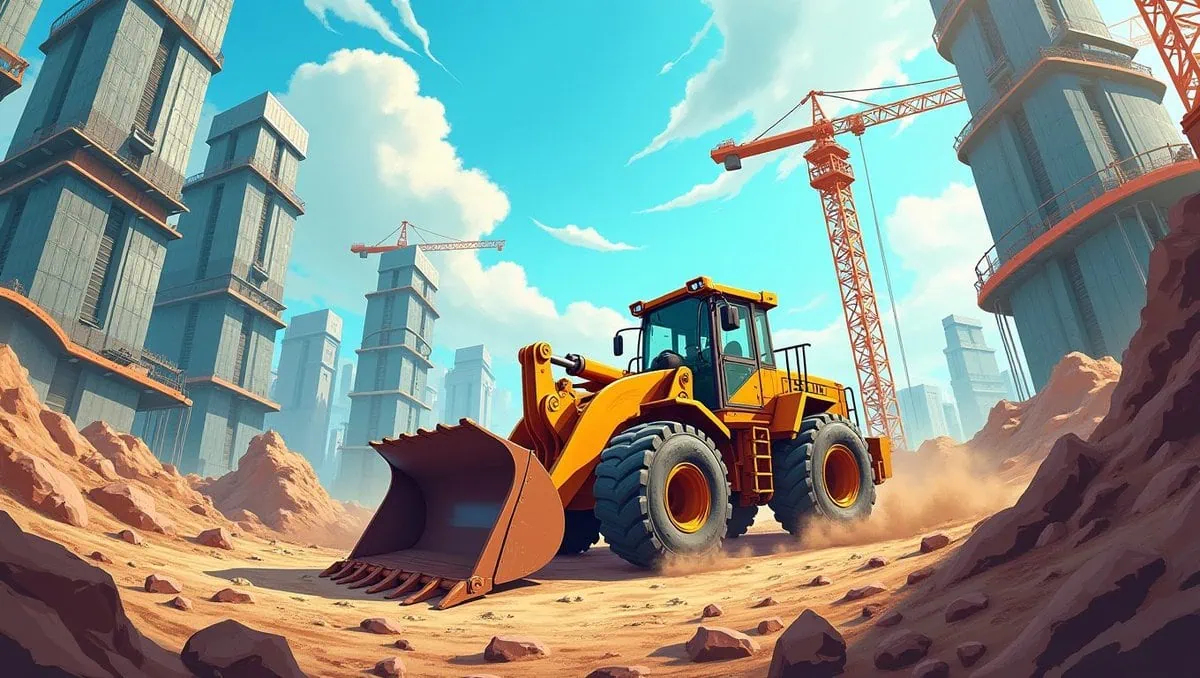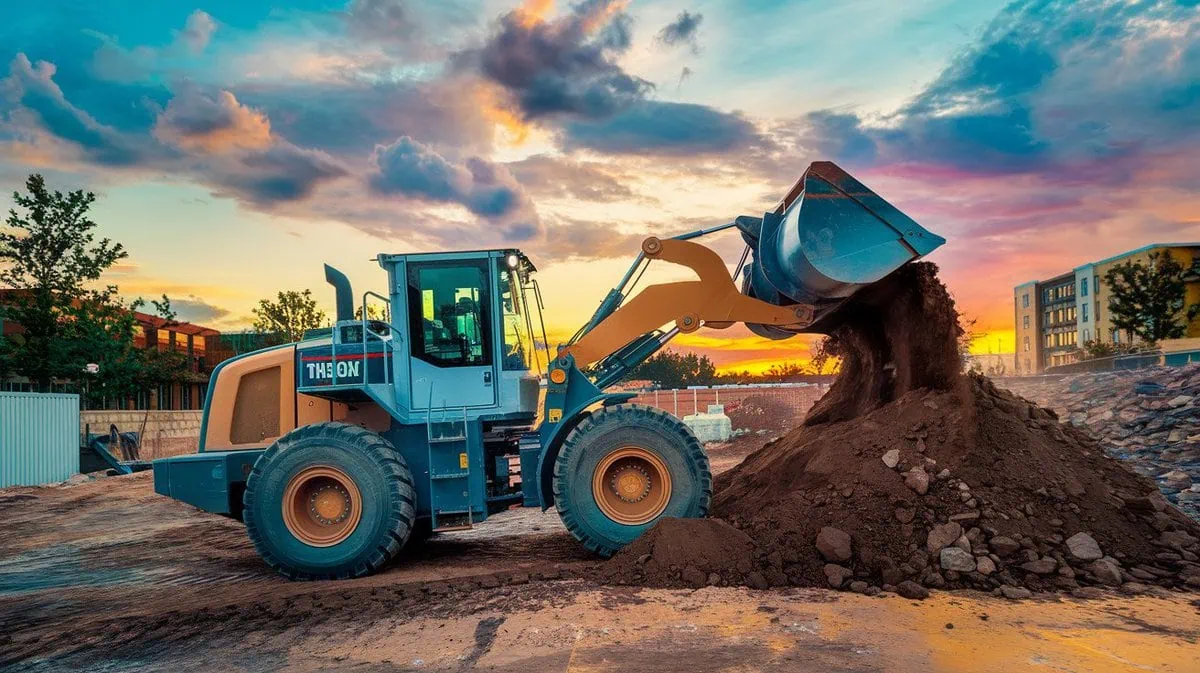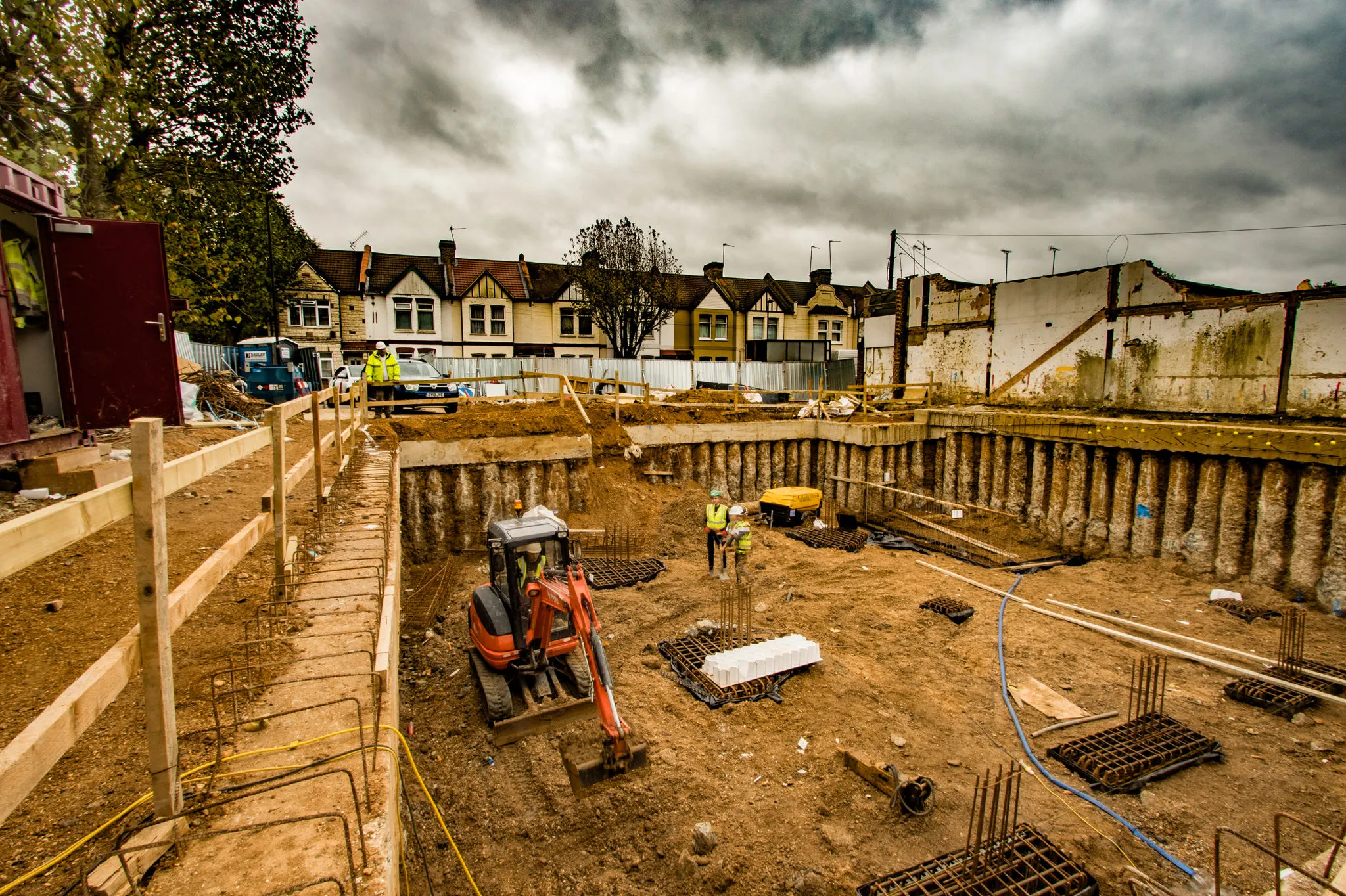Are you planning an infrastructure or construction project that requires underground installations? Trench excavation plays a critical role in laying pipelines, cables and drainage systems, offering structural support and facilitating utility connections. However, without proper planning and execution, issues such as soil instability, equipment failure, and safety hazards can arise, leading to costly delays and risks. In this guide, we will walk you through the essential aspects of trench excavation, including its applications, methods, equipment, and safety considerations.
Trench excavationis the process of digging narrow channels to install underground utilities like pipelines, cables, and drainage systems. It requires careful planning, appropriate methods, and specialized equipment to ensure safety and efficiency.
Let’s explore the key elements of trench excavation, from its applications and techniques to the best practices for ensuring project success.
What is Trench Excavation?
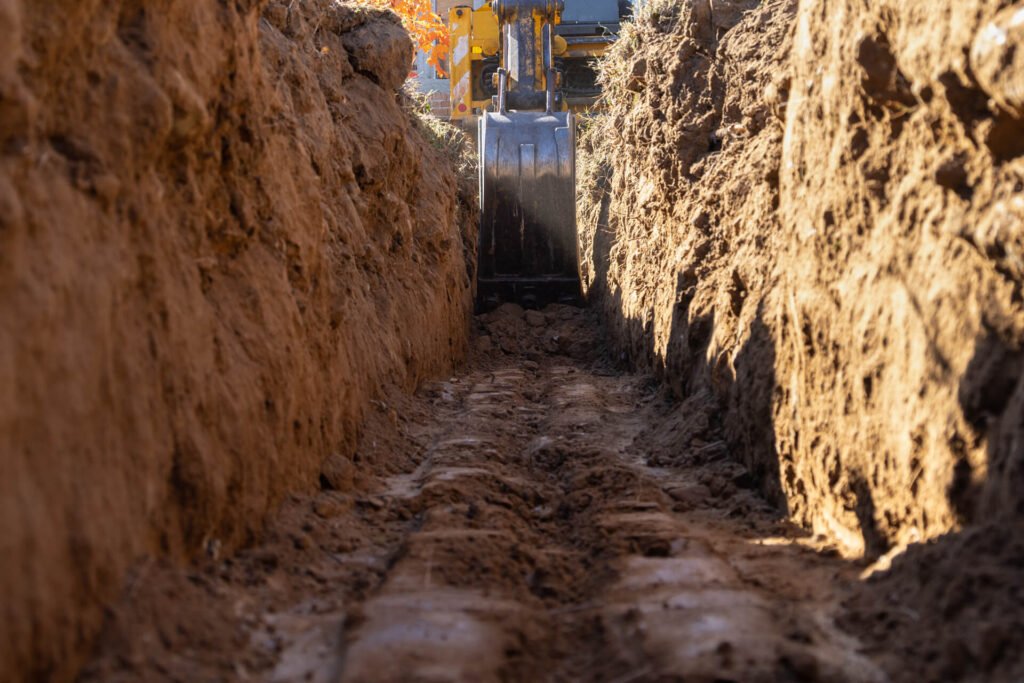
Trench excavation refers to the process of digging narrow trenches in the ground to install underground utilities, such as water and sewage pipelines, electrical cables and drainage systems. The trenches must meet specific depth and width requirements depending on the project’s needs.
Unlike general excavation, trenching involves dealing with greater depth-to-width ratios and often requires specialized equipment and techniques to ensure the structural stability of the trench and surrounding areas. Proper execution of trench excavationensures the safe and efficient installation of underground infrastructure while minimizing disruption to the environment and nearby structures.
Applications of Trench Excavation
Trench excavationis a critical process that supports various infrastructure and construction projects. Below are the primary applications of trench excavation:
1. Utility Installations
Trench excavationis vital for installing essential underground utilities:
- Water and Sewage Pipelines:Trenching is used to lay water and sewage pipelines, ensuring clean water supply and waste management. Proper trench depth and construction protect these lines from environmental damage.
- Gas Lines:Installing underground gas lines requires secure trenching to prevent leaks and hazards, ensuring safety.
- Electrical Cables:Trench excavation helps install electrical cables, shielding them from damage and ensuring a steady power supply to cities and industries.
2. Roadway Construction
Trench excavationplays a key role in road construction projects by providing space for:
- Drainage Systems: Trenching is used to install drainage systems, culverts and stormwater pipes, helping to prevent road erosion and flooding.
- Utility Placement:In urban roadways, utilities like fiber optic cables and gas lines are often placed beneath the road surface, requiring efficient trenching.
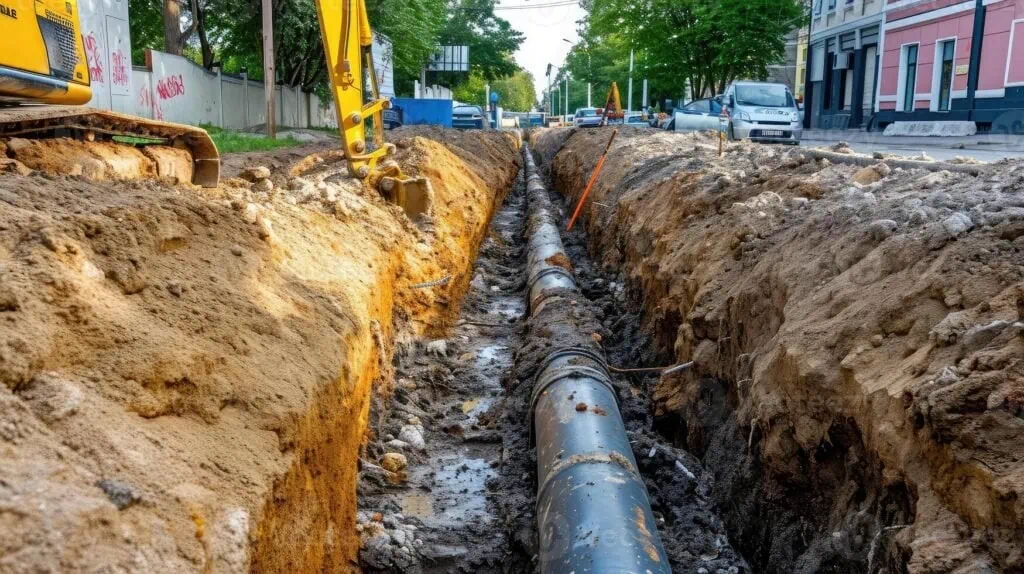
3. Drainage Systems
In flood-prone areas, trench excavationis essential for managing water flow:
- Flood Management:Trenches for stormwater pipes redirect excess water, reducing flooding and soil erosion.
- Groundwater Control:Trenching helps control groundwater flow, preventing damage to infrastructure by undermining roads or buildings.
4. Telecommunications Infrastructure
With the growth of digital communication, trench excavationis crucial for laying:
- Fiber Optic Cables:Used to install high-speed internet cables, trenching ensures protection from damage and interference.
- Telecom Networks:Trenching is used for secure cable placement in networks like mobile towers and satellite systems.
5. Structural Foundation Work
For building foundations, trench excavationis necessary:
- Footing Installation:Trenches are excavated to install footings that support the weight of buildings.
- Support Systems:Trenching is used for underground support structures like retaining walls and piles, ensuring the stability of foundations.
- Trench excavationis essential for a wide range of infrastructure and construction projects, ensuring the efficient and safe installation of utilities, roads, drainage systems, telecommunications, and building foundations.
Types of Trench Excavation Methods
Choosing the right method for trench excavation is essential for ensuring efficiency, safety, and the overall success of your project. Several methods are available, each suitable for different conditions, projects and requirements. Below are common trench excavation methods, along with their respective advantages:
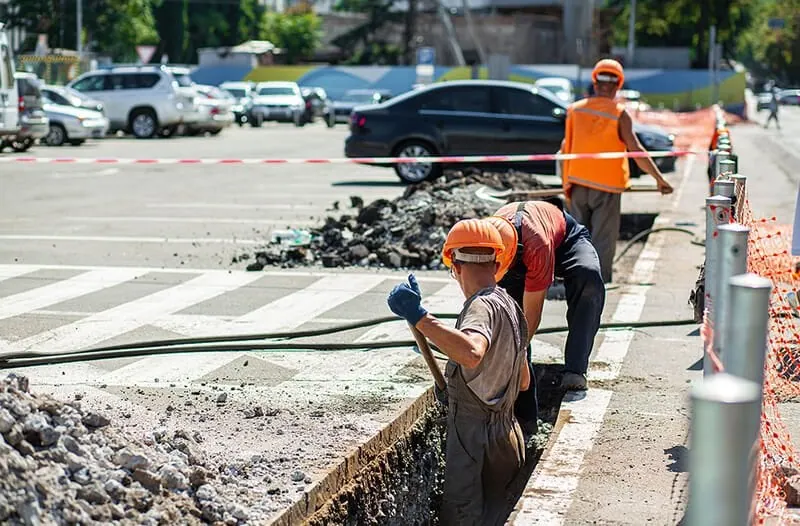
1. Manual Trenching
Manual trenching involves the use of hand tools like shovels, pickaxes, and mattocks. This method is most commonly used in small-scale projects or in areas where machinery cannot access.
Advantages:
- Precision and Control:Manual trenching allows for precise control over the excavation process, making it ideal for projects that require attention to detail, such as in tight spaces or for laying smaller utility lines.
- Minimal Disruption:Since manual trenching does not involve heavy machinery, it causes minimal disruption to the surrounding environment, making it suitable for urban areas or areas with existing infrastructure.
- Cost-Effective:For small-scale projects, manual trenching is a more affordable option as it does not require expensive machinery or fuel costs.
2. Mechanical Trenching
Mechanical trenching uses heavy machinery like excavators, backhoes, and trenchers to dig and move soil. This method is highly efficient for large-scale projects and allows for quicker completion compared to manual methods.
Advantages:
- Increased Efficiency: Mechanical trenching is significantly faster than manual excavation, reducing overall labor costs and project timelines.
- Ability to Handle Large Projects: This method is ideal for large construction projects such as roadways, pipelines, and utility installations. It is especially beneficial for digging deep or wide trenches.
- Consistency and Depth Control: Heavy machinery can dig trenches to a consistent depth and width, ensuring that excavation meets project specifications accurately.
3. Open-Cut Trenching
Open-cut trenching is a widely used technique that involves digging a trench along the full length of the excavation area. This method is often used for pipeline installations, roadwork and large utility installations.
Advantages:
- Versatility: Open-cut trenching is suitable for a variety of materials and can be adapted to accommodate different excavation depths, making it ideal for a wide range of projects.
- Ease of Access: The open trench provides easy access to workers and machinery, making it easier to install utilities, repair or replace infrastructure, and conduct inspections.
- Cost-Effectiveness: Open-cut trenching is a straightforward and often more affordable method for large projects, especially when working with larger-scale utility installations or roadwork.
4. Trenchless Excavation
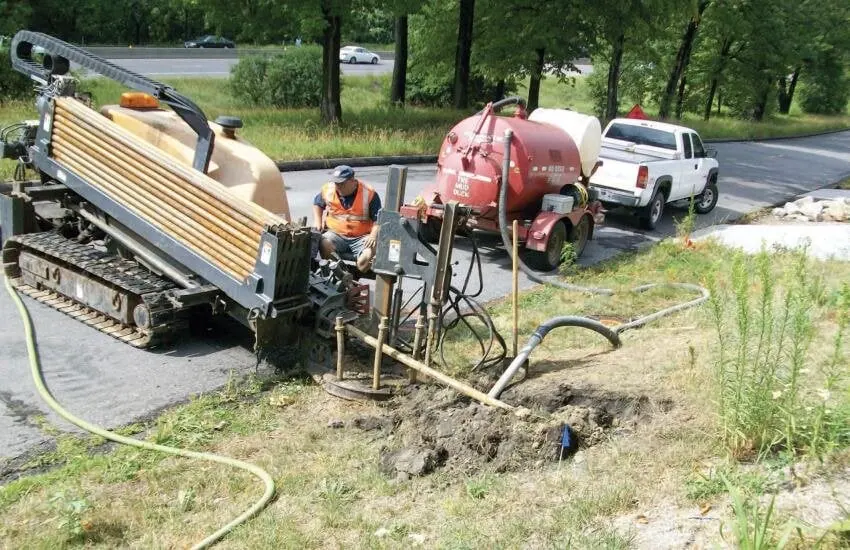
Trenchless excavation involves advanced techniques like horizontal directional drilling (HDD), pipe bursting and auger boring. These methods allow for minimal surface disruption, making them ideal for projects in urban environments or locations where disturbing the surface is undesirable.
Advantages:
- Minimal Surface Disruption: Since trenchless methods involve minimal digging, they are ideal for projects in densely populated urban areas where roadways, sidewalks, and landscaping need to remain intact.
- Less Environmental Impact: Trenchless methods are less invasive, resulting in less soil displacement and a reduced environmental footprint compared to traditional trenching techniques.
- Faster and More Efficient: In many cases, trenchless excavation methods can be completed in a shorter time frame, minimizing the duration of construction and reducing costs associated with surface restoration.
5. Vacuum Excavation
Vacuum excavation uses high-powered suction to remove soil and debris from the excavation site. This technique is often used for sensitive environments or areas with existing underground utilities.
Advantages:
- Minimal Risk of Utility Damage: Vacuum excavation is highly effective for locating and working around existing underground utilities. The precise removal of soil minimizes the risk of damaging critical infrastructure.
- Safety: The method reduces the risk of accidents, such as cave-ins or damage to utilities, because it does not involve heavy digging equipment.
- Environmental Benefits: Vacuum excavation causes minimal disturbance to the environment, making it suitable for projects in ecologically sensitive areas or places where minimal disruption is a priority.
- Accuracy and Precision: The technique allows for precise excavation around utilities, providing detailed control and avoiding accidental damage.
Key Steps in the Trench Excavation Process
Trench excavationis vital for many construction projects, including utility installation, roadwork, and foundation building. Ensuring safety, efficiency, and quality involves several steps, from planning to site restoration.
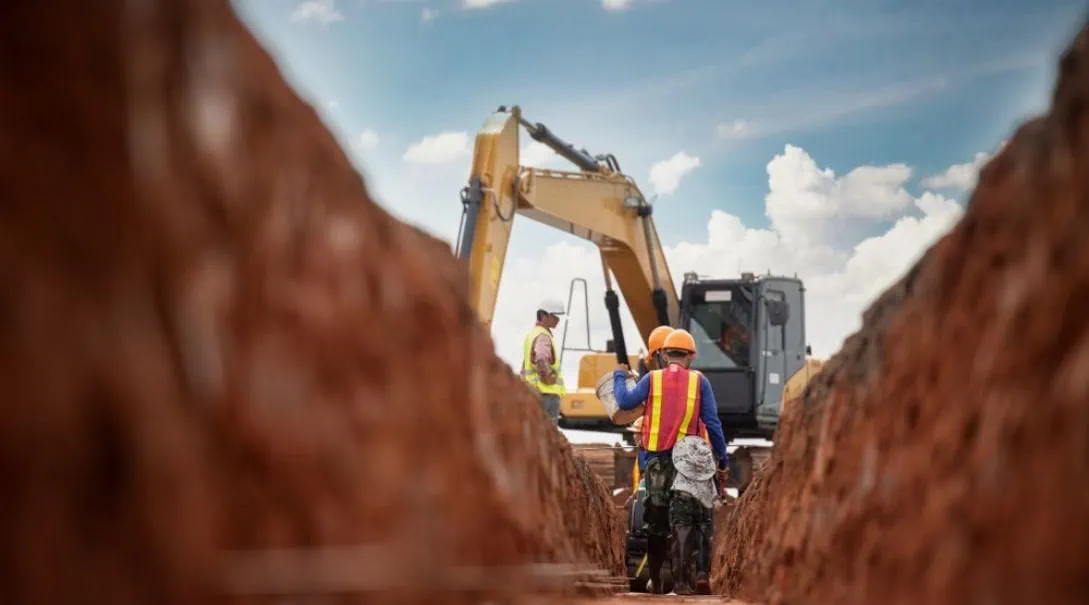
1. Planning and Site Preparation
Effective trench excavationbegins with comprehensive planning to avoid costly errors:
- Site Survey and Inspection:A site survey helps identify any existing structures, utilities, and hazards, ensuring the excavation remains clear of potential obstacles.
- Obtaining Permits:Depending on the scope and local regulations, excavation permits ensure the project follows safety and environmental standards.
- Marking the Trench Path:Clear markings indicate the boundaries and exact path of the trench, minimizing mistakes during excavation.
- Safety Barriers:Protective barriers around the site prevent accidents and unauthorized access, ensuring worker and public safety.
2. Excavation and Soil Removal
The next phase involves actual excavation, which requires the right tools and equipment:
- Choosing the Right Equipment:Depending on trench depth and soil type, equipment like small excavators, backhoes, or trenchers are used to remove soil efficiently.
- Excavating to the Correct Depth:It is crucial to maintain proper trench dimensions, with attention to depth and width to prevent collapse or instability.
- Managing Excavated Soil:Excavated materials should be stored away from the trench’s edge to avoid re-entry or blockage.
3. Utility Installation
After excavation, utilities like water pipelines, gas lines, and electrical cables are installed:
- Placing Utilities:Utilities must be placed at the correct depth and aligned precisely, ensuring minimal risk of damage and long-term functionality.
- Ensuring Proper Spacing:Correct spacing of pipes and cables helps with efficient operation and easy future maintenance.
- Protecting the Utilities:Soft materials such as sand or foam are placed around utilities to prevent damage from surrounding soil.
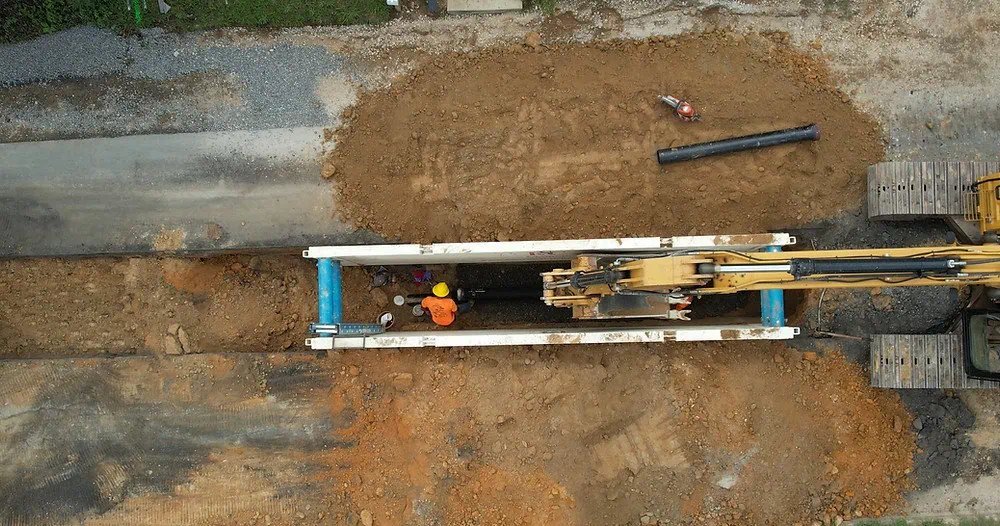
4. Backfilling and Compaction
After utility installation, backfilling ensures the trench is sealed securely:
- Backfilling the Trench:Excavated materials or suitable imported soil are used to fill the trench, ensuring it’s stable.
- Compaction:The backfill material is compacted to eliminate air pockets and prevent subsidence. This is crucial for areas subject to traffic or heavy loads.
- Ensuring Stability:Proper compaction avoids long-term soil shifts, ensuring the trench and surrounding area remain stable.
5. Site Restoration
The final step involves restoring the site to its original state:
- Surface Restoration:After backfilling, the surface is leveled and repaired, especially in areas like roads or sidewalks.
- Landscaping:For residential areas, the site may be landscaped to restore any affected gardens, lawns, or trees.
- Final Inspections:A detailed inspection ensures the trench complies with safety, construction, and environmental regulations. Any necessary tests for installed utilities are also performed to verify functionality.
- Trench excavationrequires careful planning, skilled labor, and thorough follow-up to ensure safety, stability, and compliance. By following these steps, construction projects can proceed smoothly and meet all necessary standards.
Common Equipment Used in Trench Excavation
Auswahl der richtigen Ausrüstung für trench excavationis crucial for ensuring safety, efficiency, and quality in your project. Below are some of the most commonly used machines for trench excavation:
1. Excavators
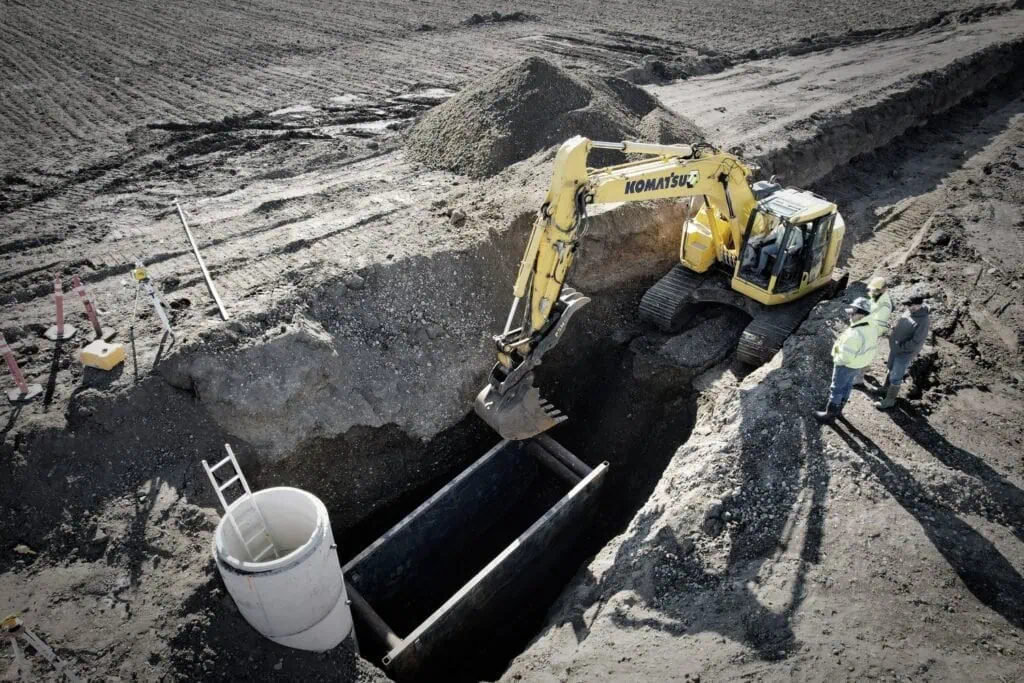
Excavators are versatile machines equipped with hydraulic arms and various attachments, making them suitable for a wide range of trenching tasks.
- Applications: Excavators are ideal for digging trenches of various depths for utilities, water pipelines, electrical lines, and infrastructure projects.
- Importance: Their flexibility allows them to perform efficiently in different soil conditions and project types, making them indispensable for most excavation tasks.
2. Trenchers
Trenchers are specialized machines designed specifically for creating narrow, deep trenches, often used in installations like pipelines and cables.
- Applications: Trenchers are highly efficient for fast, precise trenching in soft to moderately hard soil types.
- Importance: They ensure accurate trench dimensions, which minimizes the need for backfilling and saves time, making them an excellent choice for utility installations.
3. Bulldozers
Bulldozers are heavy-duty machines that use large, powerful blades to clear, level, and move soil during excavation.
- Applications: Bulldozers are typically used for site preparation before excavation and for backfilling once the trench is completed.
- Importance: Their power makes them suitable for large-scale projects, and they provide smooth and even backfill, essential for maintaining the integrity of the site.
4. Compactors
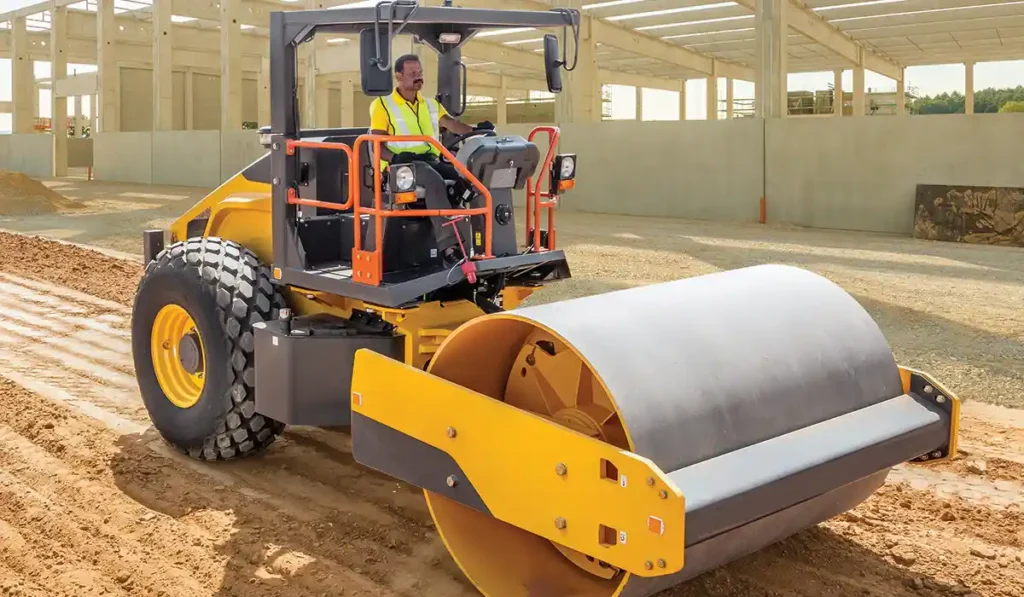
Compactors are used to compress backfilled soil, preventing it from settling after excavation and ensuring stability.
- Applications: They are used to ensure secure trench filling and to prevent the ground from shifting, especially in areas subject to heavy traffic or vibrations.
- Importance: Proper compaction is crucial for maintaining soil integrity and minimizing the risks of trench collapse over time.
5. Rock Breakers
Rock breakers are specialized tools used to break through tough, rocky terrains during excavation.
- Applications: These tools are primarily used in rock-filled areas or mining operations where traditional excavation equipment may not be able to penetrate.
- Importance: Rock breakers provide a safe and efficient method to break hard materials, reducing the need for explosives and minimizing environmental and safety risks.
Factors to Consider in Trench Excavation Projects
To ensure a successful trench excavationproject, several factors must be considered to balance safety and efficiency. Here are key points to focus on:

1. Soil Type and Stability
Soil conditions greatly influence the excavation method. Loose or sandy soil requires stronger support systems to prevent collapses, while stable rock may allow for simpler management.
Importance:Understanding soil type reduces the risk of cave-ins and project delays.
2. Safety Measures
Safety is paramount in trench excavation. Proper methods like shoring, sloping, and trench shields protect workers from hazards such as cave-ins.
Importance:These practices are essential to preventing accidents and ensuring a safe working environment.
3. Project Timeline and Budget
Effective planning and coordination are crucial. Delays from weather or unexpected conditions can increase costs and extend timelines.
Importance:Proper planning ensures that the project stays on schedule and within budget.
4. Environmental Impact
Trench excavation can lead to soil erosion, ecosystem disruption, and water contamination. Using erosion control and following environmental regulations can mitigate these effects.
Importance:Reducing environmental impact ensures compliance and minimizes legal or ecological issues.
5. Equipment Selection
Choosing the right machinery is critical for efficient excavation. Backhoes, trenchers, and compactors each have specific uses to match the soil and project requirements.
Importance:Correct equipment choice improves efficiency, reduces costs, and ensures smooth operation.
Excavation Trench Safety Practices
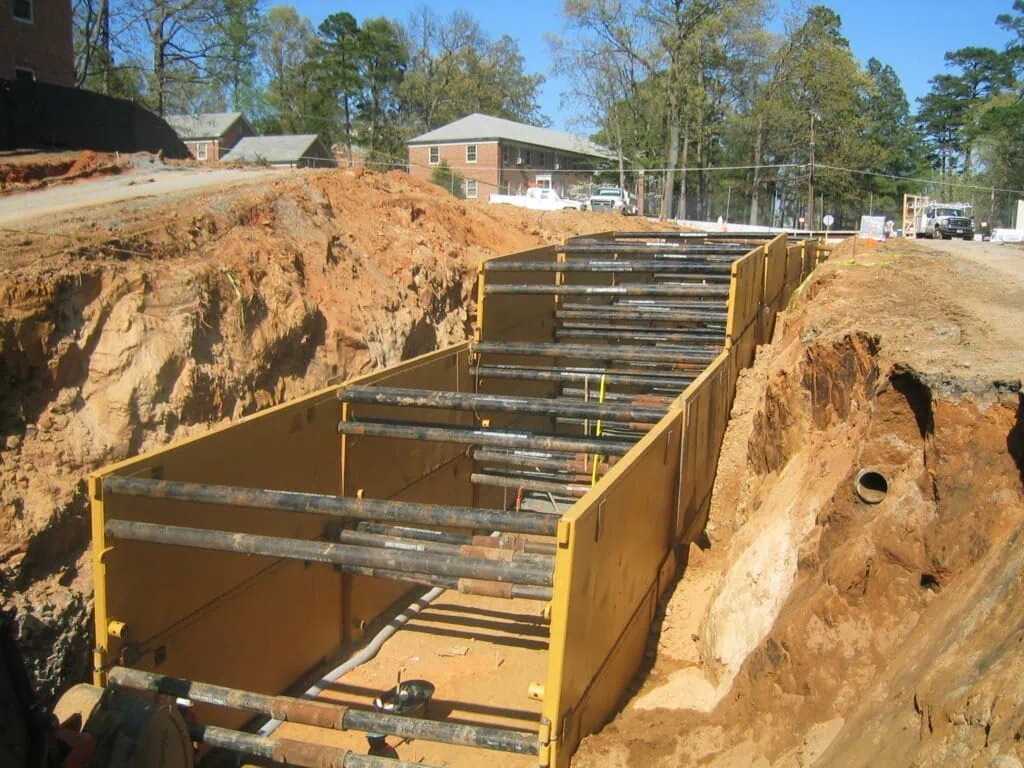
Trench excavationcarries significant risks, including the potential for soil collapse, equipment-related accidents, and worker injuries. To ensure safety, proper precautions must be followed throughout the excavation process. Here are essential safety practices for trench excavationoperations.
1. Proper Training
Training workers on machinery handling, emergency procedures, and site-specific hazards is crucial for safety. Workers should understand how to safely operate equipment like excavators and backhoes and respond effectively to emergencies such as trench collapses.
Importance:Proper training reduces risks, improves efficiency, and ensures a quick response to accidents, making the excavation process safer.
2. Trench Protection Systems
To prevent trench collapses, trench protection systems such as shoring, sloping, and trench boxes must be employed.
- Shoring involves support systems along trench walls to prevent soil movement.
- Abfallend refers to cutting trench walls at an angle to reduce collapse risk.
- Trench Boxes are prefabricated structures that provide a safe space for workers.
Importance:These systems significantly reduce the risk of cave-ins, ensuring safety while maintaining work productivity.
3. Personal Protective Equipment (PPE)
PPE is vital in protecting workers from falling debris, machinery accidents, and environmental hazards. Key PPE includes helmets, gloves, safety boots, high-visibility clothing, and respiratory protection.
Importance:Wearing PPE minimizes injury risk, promoting a safer work environment.
4. Regular Inspections
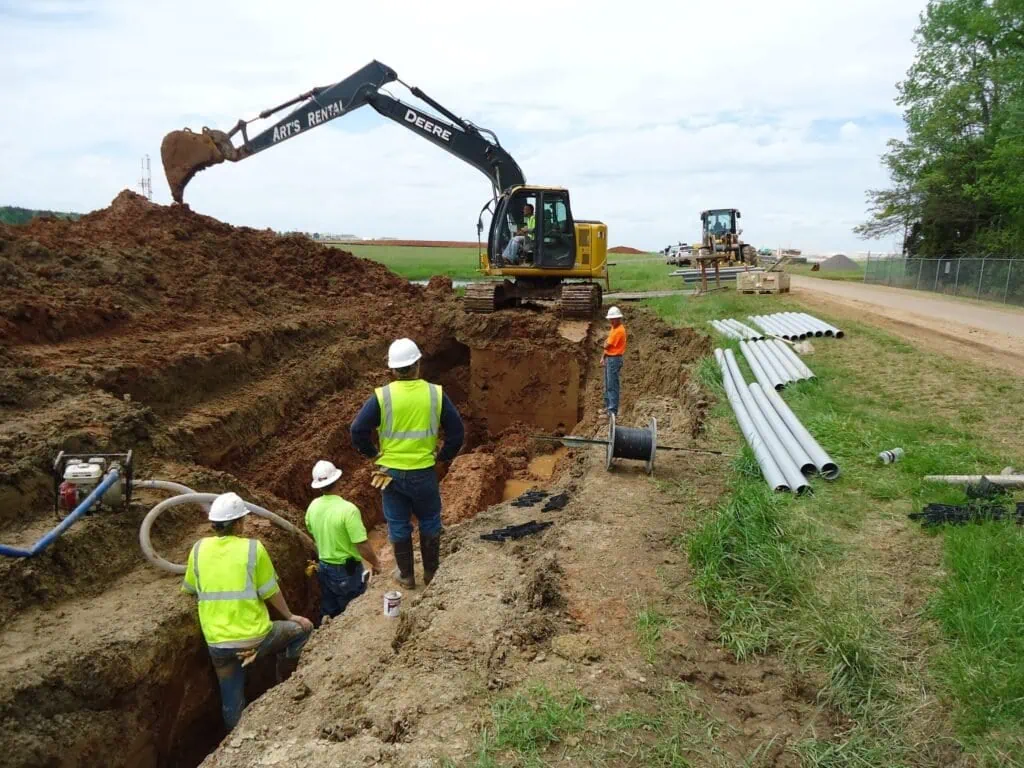
Routine inspections of trench walls, equipment, and safety systems ensure that potential hazards are identified early. Equipment should be checked for proper function, and trench protection systems must be inspected for stability.
Importance:Inspections help prevent accidents and ensure that safety measures are in place.
5. Emergency Preparedness
Despite all precautions, accidents can still occur, making emergency preparedness essential. Develop an emergency response plan and provide first-aid training for workers. Ensure rescue teams and emergency supplies are readily available on-site.
Importance:A well-prepared emergency plan reduces the severity of accidents, helping workers respond effectively and minimize injury.
Abschluss
Trench excavation is a vital component of modern construction and infrastructure projects. Whether you’re laying underground utilities, constructing roadways or installing drainage systems, selecting the right method, equipment and safety measures is crucial for project success. By understanding the various aspects of trench excavation, you can ensure efficiency, cost-effectiveness and compliance with safety regulations. We are leading supplier of used construction machinery in China, if any needs or questions, please Kontakt mit uns.


